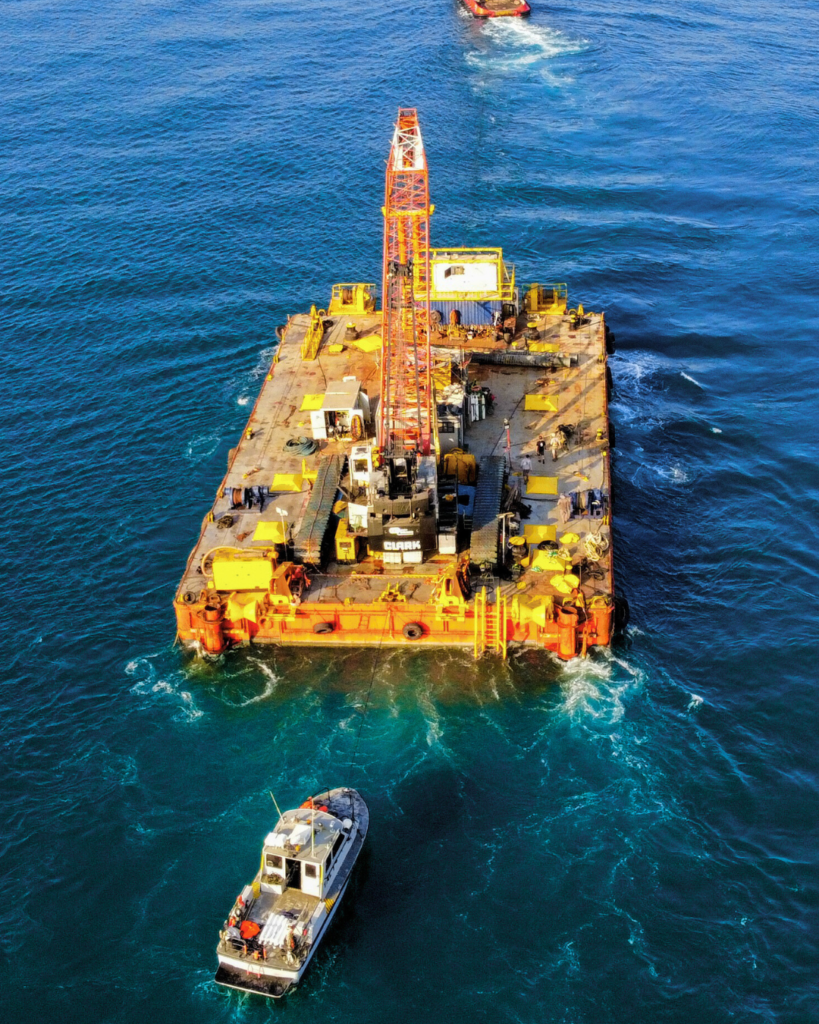
source: pixabay
Towing large offshore structures across open water is a complex operation — one that critically depends on environmental conditions. The towing route, must be evaluated for weather and oceanic risks. Wind patterns, tropical storms, and surface currents can all impact timing, safety, and route feasibility.
In collaboration with our industry partners – Prima Energy Northwest Natuna Pte., Ltd., we conducted a comprehensive atmospheric and towing route risk assessment in ten years. The study focuses on evaluating key meteorological and oceanographic drivers affecting offshore towing operations across a wide operational corridor.
A high-level risk review was performed to assess environmental exposure along the towing path. This included identifying zones of increased wind and wave, current influence, and seasonal weather variations that may affect towing safety and timing.
Picture 1. Location
source: Konfersi, 2025.
🌦️ Offshore Environmental Conditions
We analyzed key metocean parameters to understand prevailing conditions during the year:
- Wind speed, direction
- Significant wave height
- Current speed, direction
- Weather parameters (air temperature, air pressure, precipitation, and historical tropical cyclone)
📈 Statistical & Seasonal Insights
Statistical tools were used to identify environmental trends that matter for offshore towing:
- Roses
- Joint probability
- Return periods for extreme wind and wave
- Historical tropical cyclone
- Seasonal and Climatology characteristics
- Spatial distribution
- Weather uptime probability
🌀 Tropical Cyclone Classification
The route was reviewed for historical tropical cyclone influence. Key aspects included:
- Frequency and intensity trends
- Alignment with seasonal towing windows
- Route segments with higher exposure to cyclonic conditions
Picture 2. Historic tropical cyclone
source: Konfersi, 2025.
🔍 Explore how our data-driven solutions can help you plan better, reduce risks, and optimize performance.
